- Stay Connected
 Abraham Lincoln
If given the truth, the people can be depended upon to meet any national crisis...
Abraham Lincoln
If given the truth, the people can be depended upon to meet any national crisis...
 Guildford news...
for Guildford people, brought to you by Guildford reporters - Guildford's own news service
Guildford news...
for Guildford people, brought to you by Guildford reporters - Guildford's own news service
I Remember Those! More Old Items From Guildford’s Shops And Businesses
Published on: 26 May, 2020
Updated on: 28 May, 2020
by David Rose
Here is another look at Guildford’s past with items of packaging, tools, bottles and promotional material. It follows on from the recent Exclusive! Old Bags of Guildford Revealed feature that certainly attracted readers’ attention.
Click on all images to enlarge in a new window.
With one of the oldest items first, a metal vesta case given away as a freebie by the George Crowley, the landlord of the Bear pub, Friary Street, on the occasion of George V’s silver jubilee in 1935.
One side features George V and the other Queen Mary. There is just room to squeeze in the words: “Special Snacks & Cockburn’s Port”.
The Bear was sold in 1964 by Courage Ltd for the redevelopment of Friary Street. It was on the east side (North Street end) and part of the facade exists today.
The Bulls Head was in the High Street on the corner of Market Street. Dating back to the mid-16th century at least, it was threatened with closure in 1973 when acquired by a developer who had plans to turn it into a restaurant.
However, it was put up for sale again in 1976 and bought by two local businessmen who reopened it. Twelve years later they sold it to another developer and the pub closed for good.
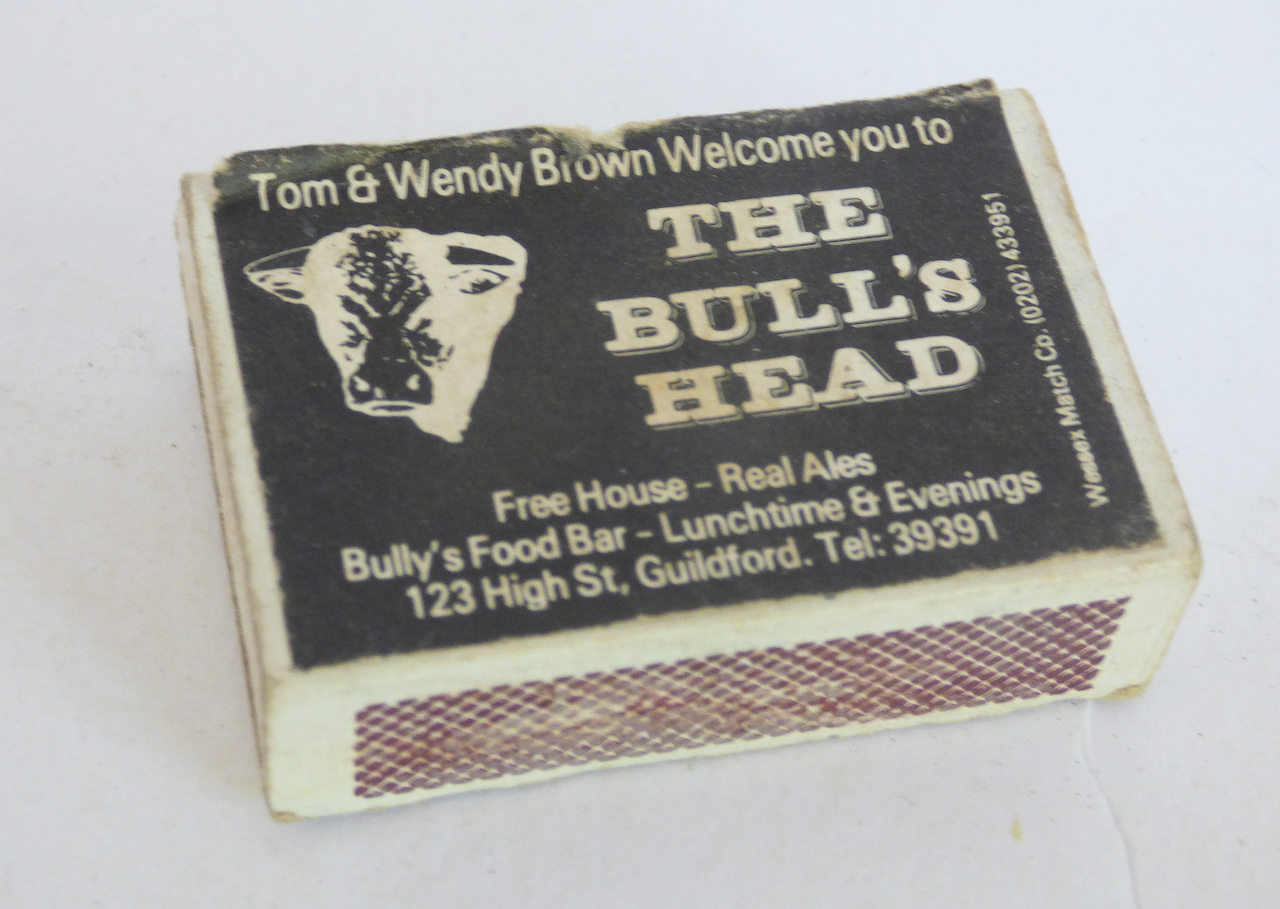 Does the Bull Head matchbox date to the pre-1973, or post-1976? That might be confirmed if anyone recalls when Tom and Wendy Brown were running the pub, as shown on the box.
Does the Bull Head matchbox date to the pre-1973, or post-1976? That might be confirmed if anyone recalls when Tom and Wendy Brown were running the pub, as shown on the box.
The Sea Horse at Shalford is another local pub with some age to it. It became a pub in the 1740s and had previously been a property called Burtons. Records indicate that it had actually been two adjoining cottages and in the early 19th century was knocked into one.
The Guildford brewer Crooke’s leased the pub in 1811 and by 1869 it had a full licence. When Crooke’s brewery closed in 1929 and its pubs sold off the Seahorse was bought by brewers George Gale & Co, of Horndean, Hampshire. Today it is a Mitchells & Butler pub.
However, the landlord in about the 1970s-80s was a character called Tony. A genial gent, he had a novel way of encouraging his customers to drink up when he called time. Without fail, using a microphone he sang the words that were heard at the end of the 1950s and 60s children’s TV programme Andy Pandy: ‘Time to go home, time to go home…. Andy is waving goodbye, goodbye.’
I like to think the matchbox dates to the time he was there.
Guildford’s once-famous Friary, Holroyd & Healy’s Brewery (merging to becoming Friary Meux in 1956 and taken over by Allied Breweries in 1963) advertised its beers and ales with a variety of giveaway items.
Both sets of playing cards pre-date the merger with the London brewer Meux. Friary’s emblem was the co-joined black and red triangles. Meux’s emblem was a horseshoe. The two emblems were combined on pub signs, bottles, crates, promotional items and so on, from 1956.
The crown cork bottle cap was invented by William Painter of Baltimore, USA, in 1892. This simple invention featured a sealing disc on the bottle and topping it with a metal holding cap crimped around the outside surface of the bottle’s mouth. It was designed to be easily removed with an opener.
When the invention came to Britain in around the 1910s there was some opposition to it by breweries and soft drinks firms who had been happily using bottles with either corks or screw stoppers.
Screw stoppers were easy to use and most people owned a corkscrew. But how would people open the new-fangled crown cork bottle? Firms were advised to give their customers bottle openers. but they were reluctant owing to the additional cost of giving away thousands if not millions of these new tools.
The fact that the humble bottle opener could have a dual-use to publicise their businesses and products eventually won them over!
The first of the two Friary bottle openers seen below has a registered design number on it.
This ice pick (seen below) with two attachments is marked Friary Brewery, although the printed letting on the barrel is very faint and difficult to photograph.
Catering Houses was a branch of Friary that focused on food and dining in its tied houses and hotels. These three plastic cocktail sticks (circa 1950s) are in the form of pubs signs. The sign on the far left and the one far right actually swing! The ‘fixed’ sign in the centre is for the Saddler’s Arms, Send Marsh, Ripley.
Below is a cast-iron plaque marked FILMER & MASON. GUILDFORD. It was a foundry (now the site of the Yvonne Arnaud Theatre) dating back to around 1794 that made castings for agricultural implements as well as domestic items.
Towns such as Guildford once had one or more foundries. However, cheaper mass-produced goods from the industrial north saw to their decline and in Guildford the foundry closed in 1941, by that time under the ownership of a firm called Dickenson & Burne.
What could this plaque have been attached to? A piece of farm machinery, pumping equipment, a stove? It’s most unlikely we will ever know.
But this tiny cardboard box may well have contained a pair of earrings or perhaps a brooch.
Venables, proclaiming on the box as being jewellers watchmakers and opticians, was in Market Street for many years, perhaps even into the 1990s?
Here is a pair of spectacles in their original case marked with the name of the opticians – A HAWES & SON, 8 HIGH STREET, GUILDFORD.
Trading there in the mid-1930s, according to the 1935 edition of Lasham’s Directory of Greater Guildford, Hawes’ premises was in today’s upper High Street on the north side between the junction with North Street / Chertsey Street and the Royal Grammar School.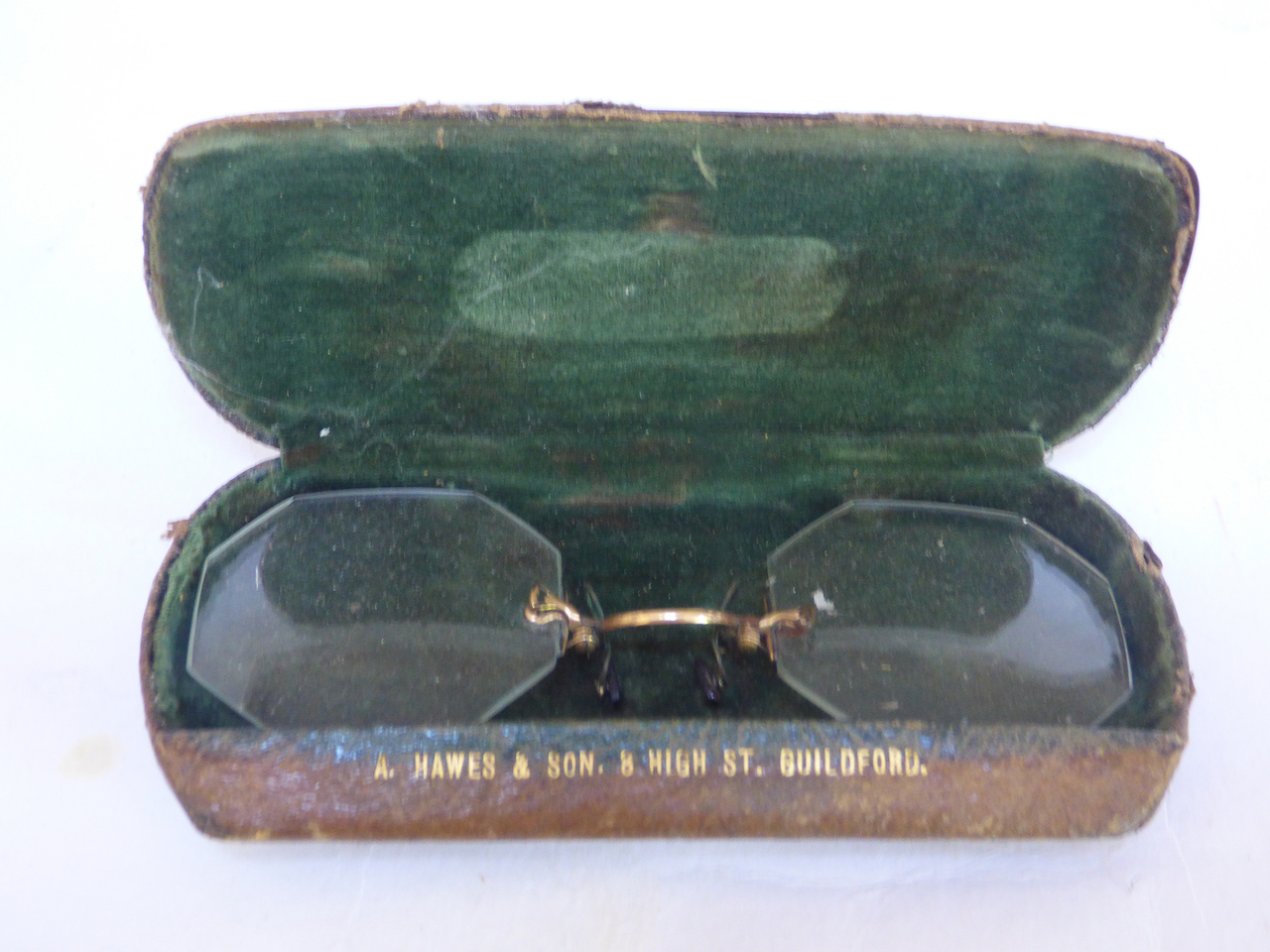
Moving into London Road and this is a box for dentures issued by dental surgeons F. R. Salisbury. Its premises were on the north side, between Dene Road and York Road.
Chemists now, first up is a child’s weight and height register card issued by Henry Jeffries of Guildford, of whom Jeffries Passage (High Street to North Street) is so named.
The business was to the left of the pathway, and established as far back as 1815.
Dating from 1919, note the name gives as ‘Mrs Clarke’s Baby’! The child was born on September 6, 1918 and the filled in details are for various dates throughout 1919.
This card was a rather simple yet clever promotional aid in an attempt to ensure customers stayed loyal and returned again and again.
Guildfordians were once well catered for by independent chemists, even after the arrival of the “big boys”. Boots the Chemist (Southern) Limited, 60b North Street, Guildford (see left); and Timothy Whites & Taylors, Swan Lane, were among the first of the multiple chain stores to arrive from around the 1920s intending to take custom away from the local traders. The bottle on the left may date to the 1950s or 60s, the one on the right is a decade or two older.
A bottle (circa 1960s) that contained methylated spirt according to the label issued by G. Morgan, chemist and optician, who had shops at 75 Woodbridge Road and 39 Woodbridge Hill, Guildford.
Edward Jones was another independent Guildford chemist at 140 High Street – on the south side, just up from Milkhouse Gate. The name still existed into the 1970s, although under the ownership of David M. Brown.
And finally, a Guildford Co-operative Society’s member’s card for the ‘divi’ (financial reward loyalty scheme) surrounded by metal and plastic milk and bread tokens.
Formed in Guildford in 1891, the Guildford Co-op grew rapidly with its main shop in North Street and occupying further buildings down Haydon Place. Its bakery was in North Place (where the Waitrose store’s car park is today) and the dairy was in Woodbridge Road (where Currys PC World is currently).
I am not sure when the Guidford Co-op’s ‘divi’ scheme began, but the card belonged to my mum, Freda Ethel Rose. It must date after she married my dad in 1947. But the number is a very low one – 160. Often I hear people recall their Co-op ‘divi’ number and most often theirs is at least four figures.
I have a feeling this number was transferred from an older and previous member. It may have been my maternal grandmother, or it may have had something to do with my mum working at the Co-op in Guildford in the publicity department in the 1950s.
Thanks go to the many people who pass on to me local items such as those included here. Where would we be if we didn’t have anything to look back on?



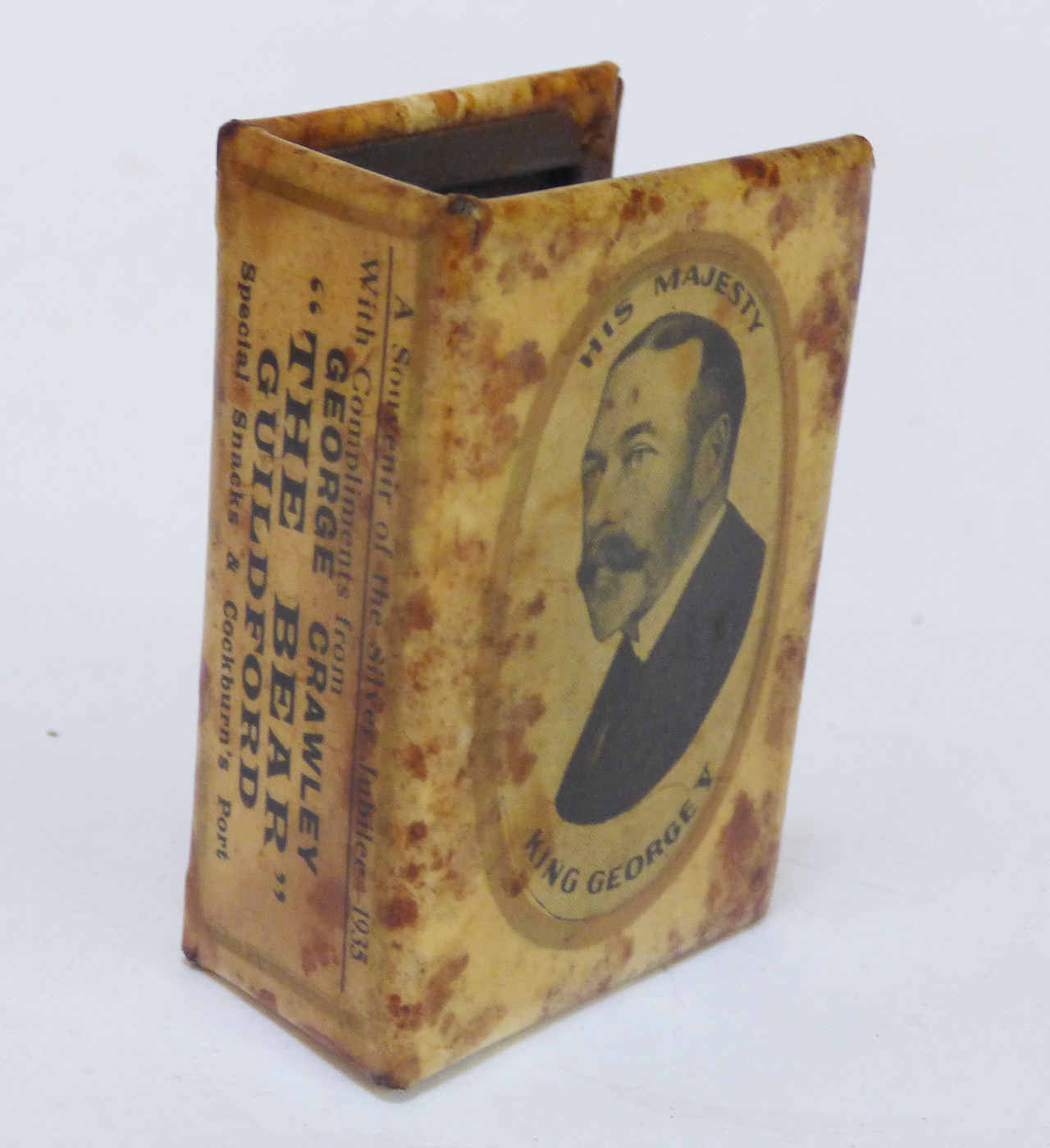
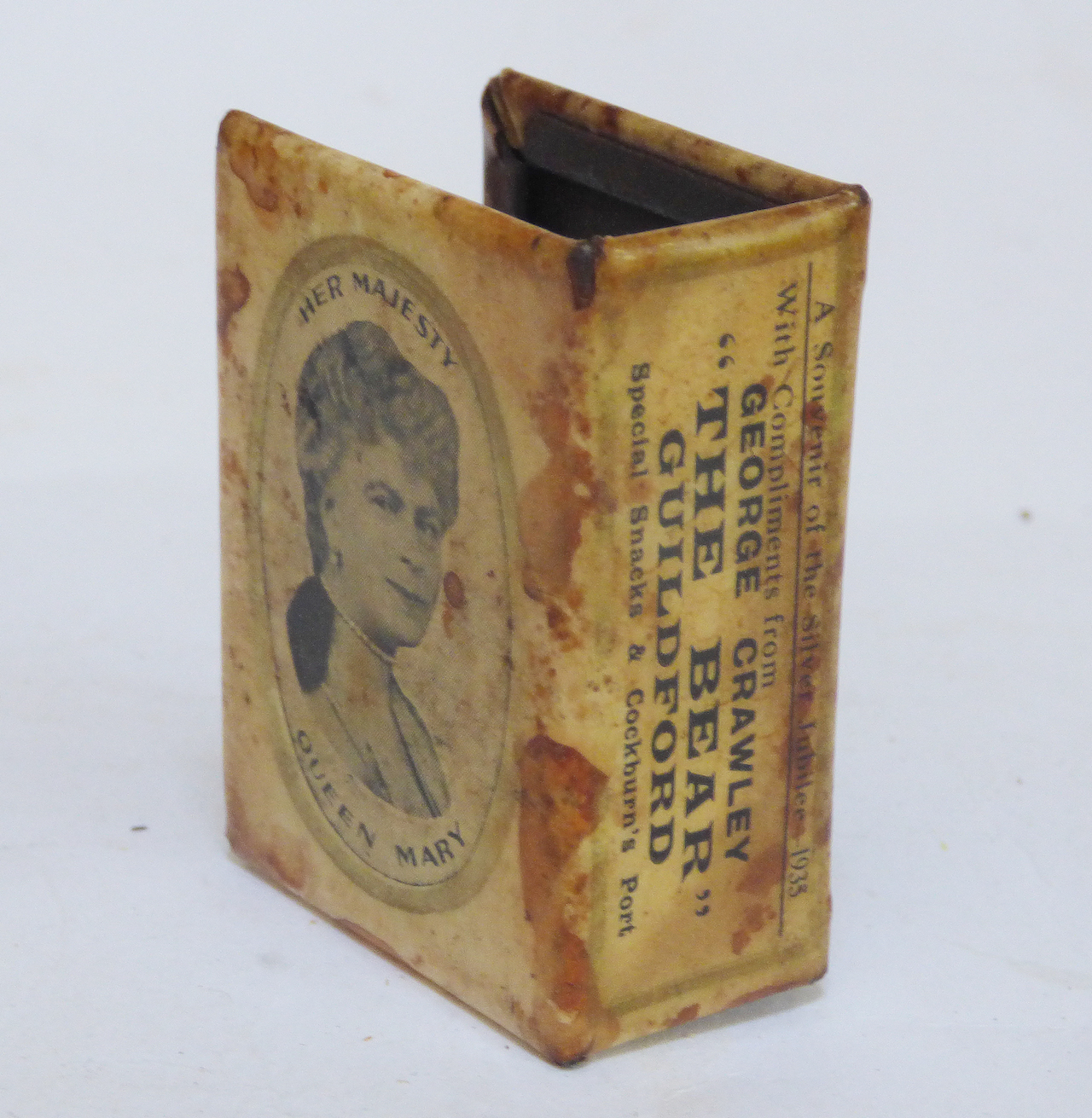
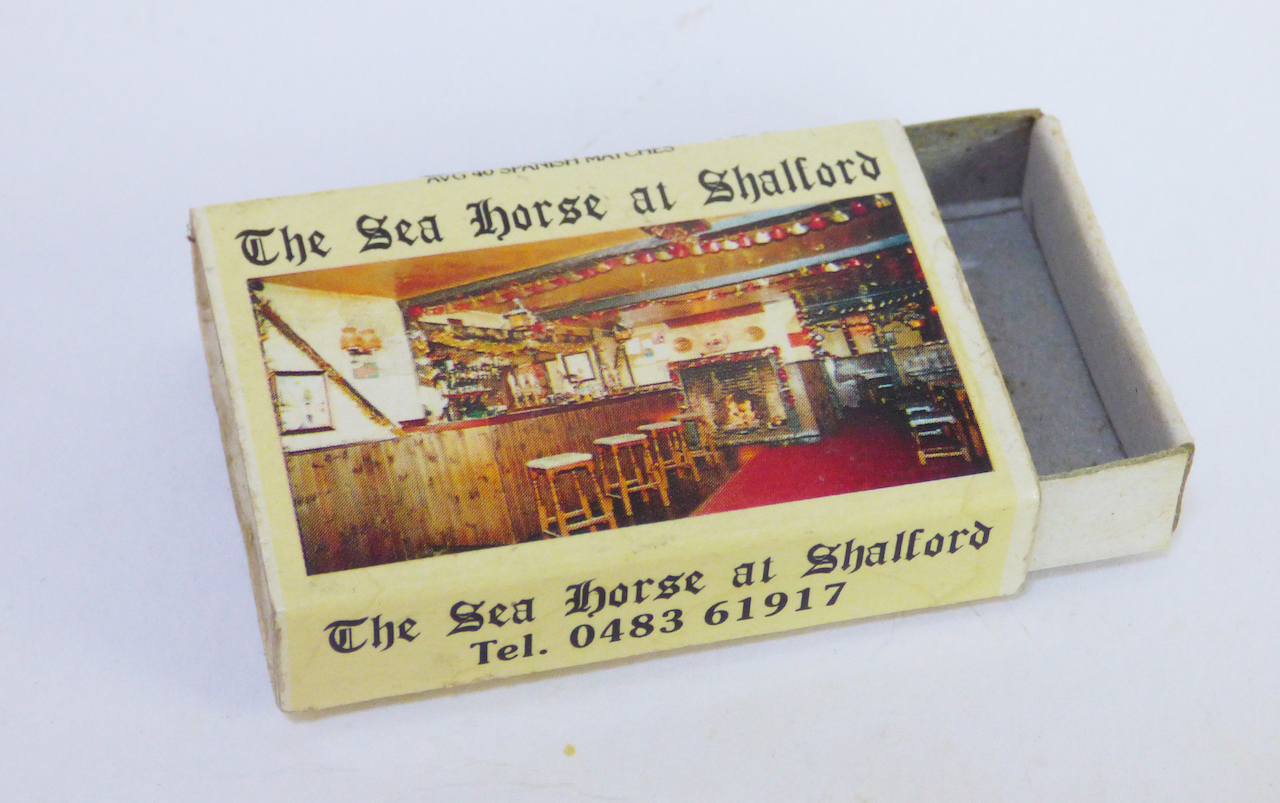
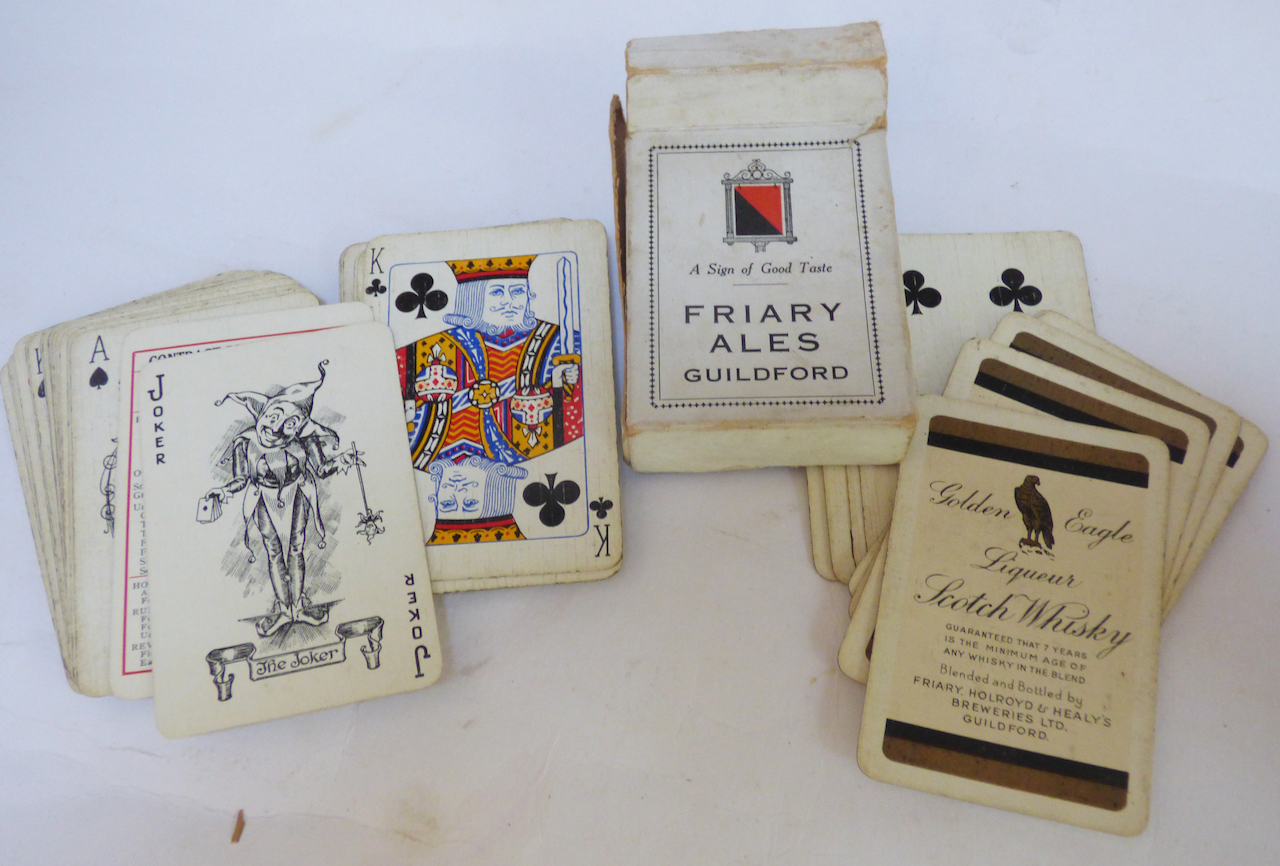
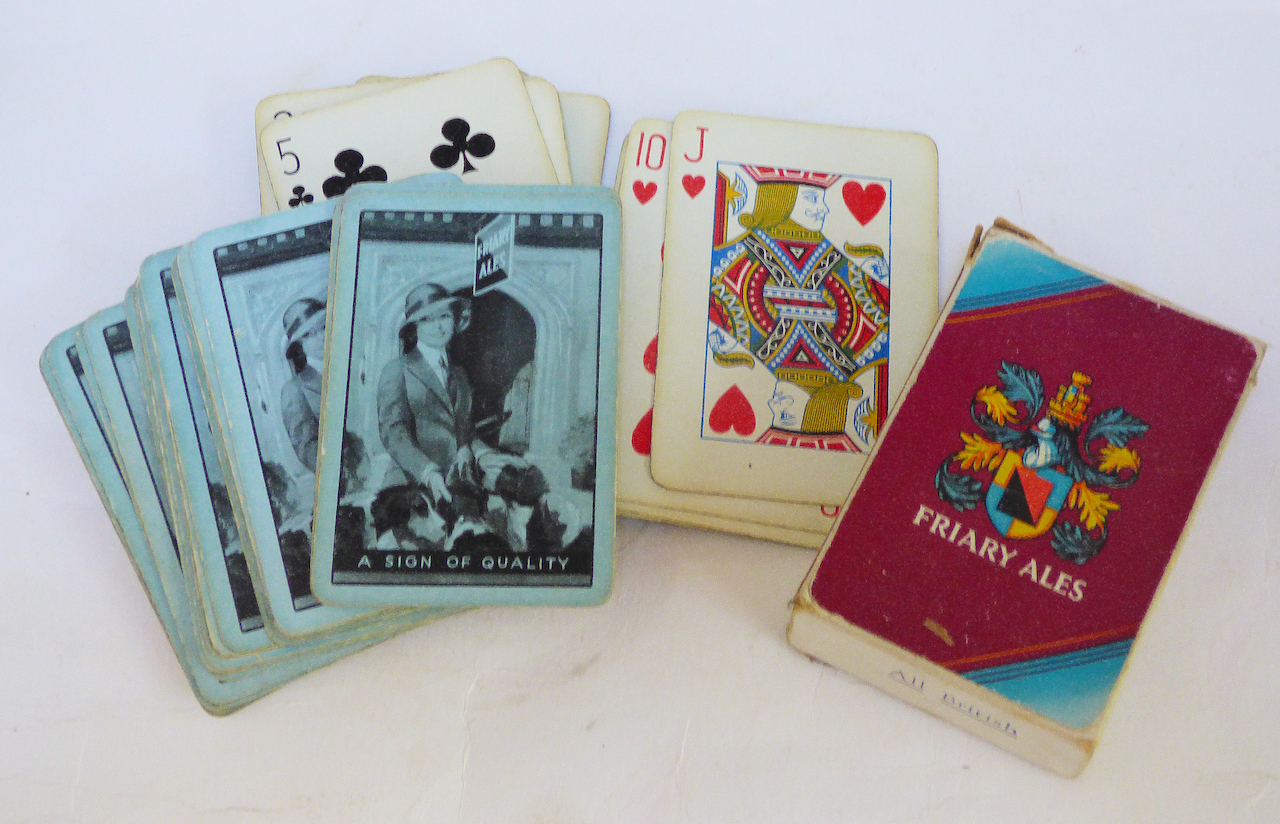
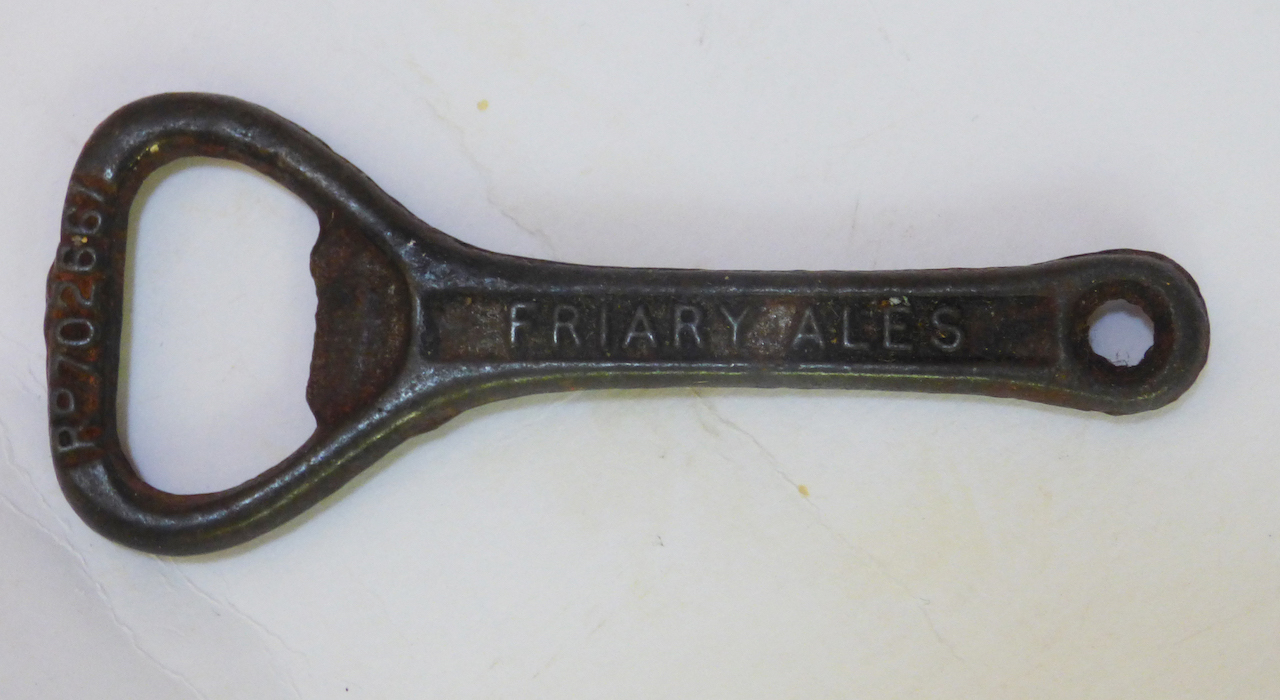



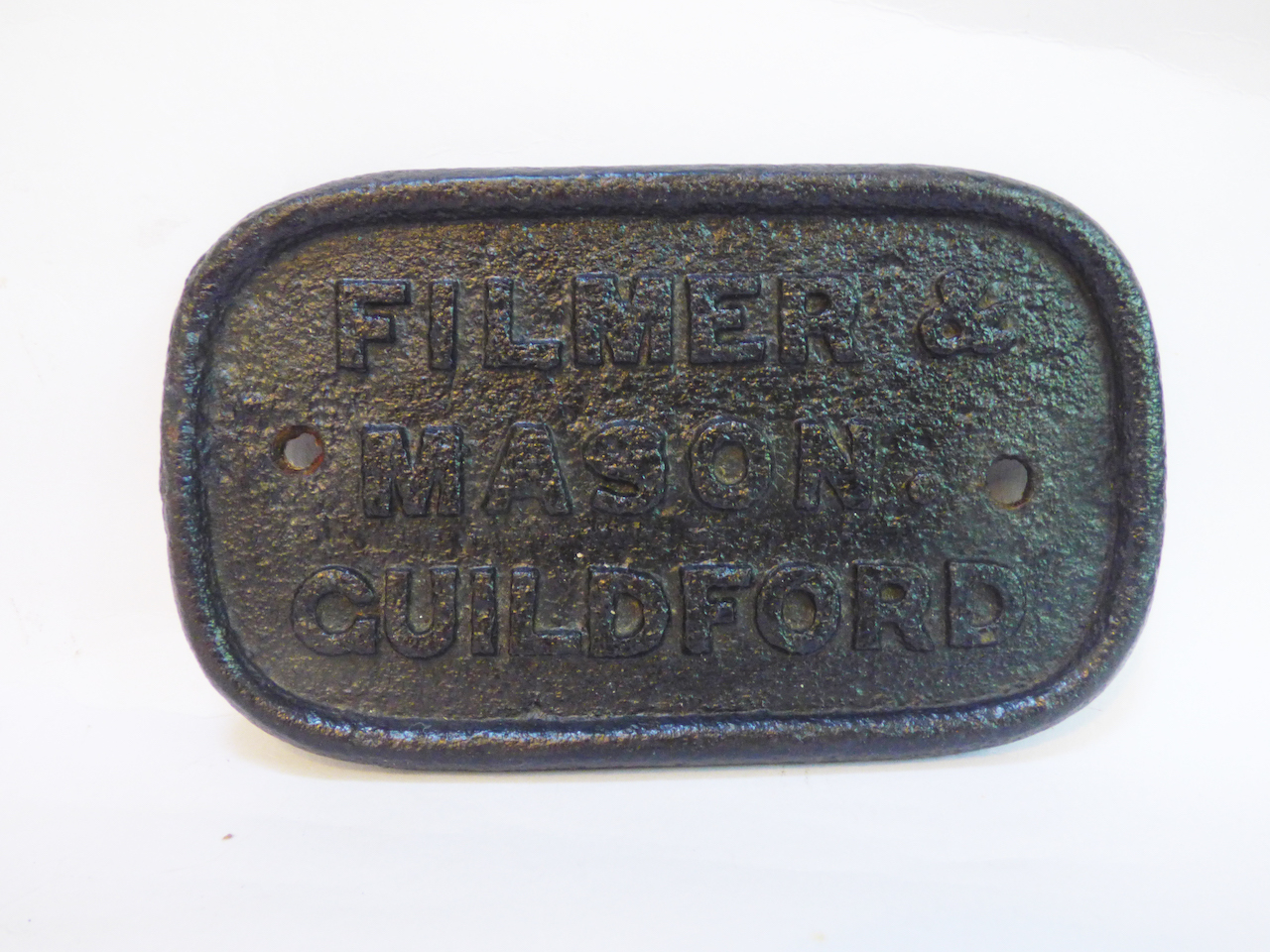
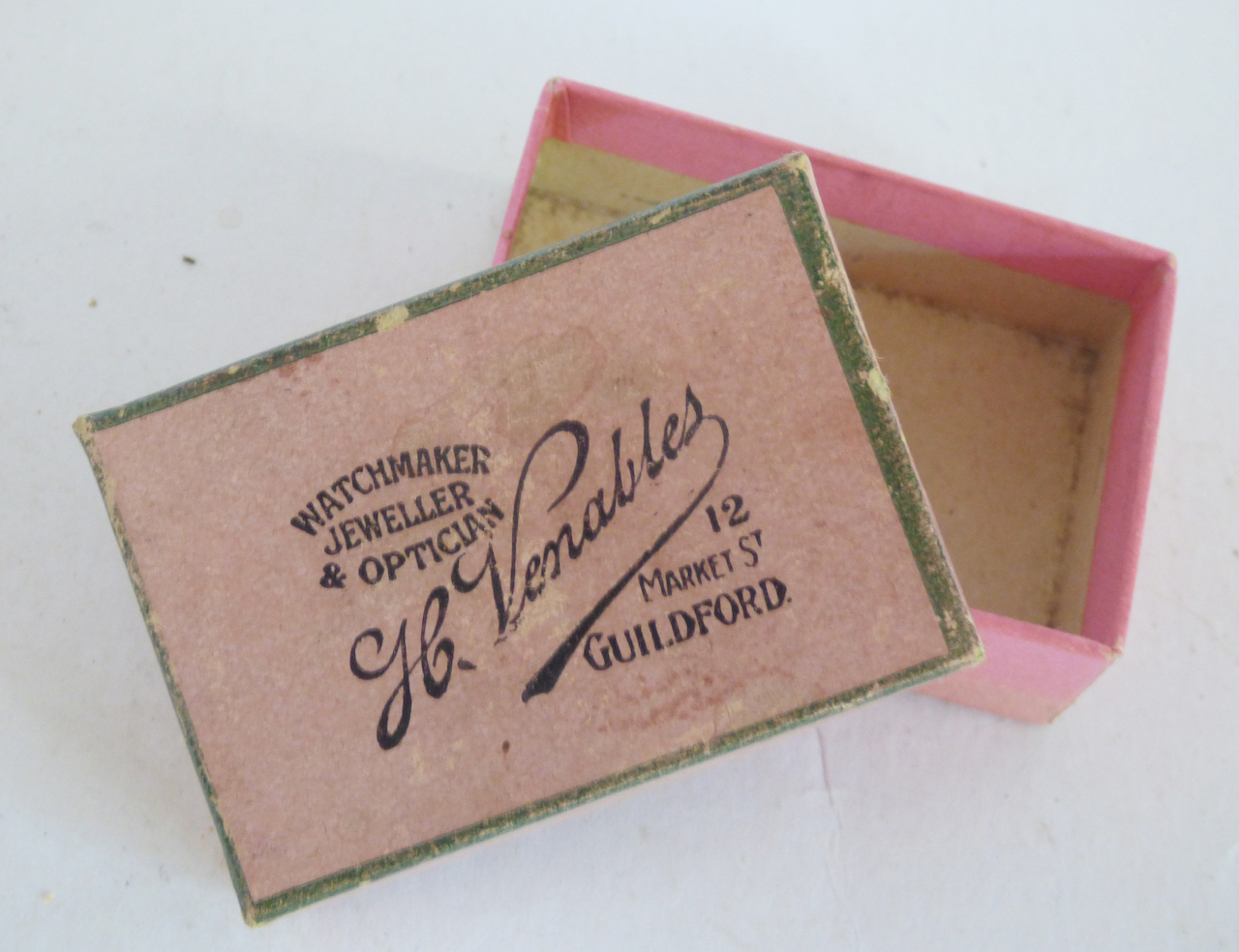

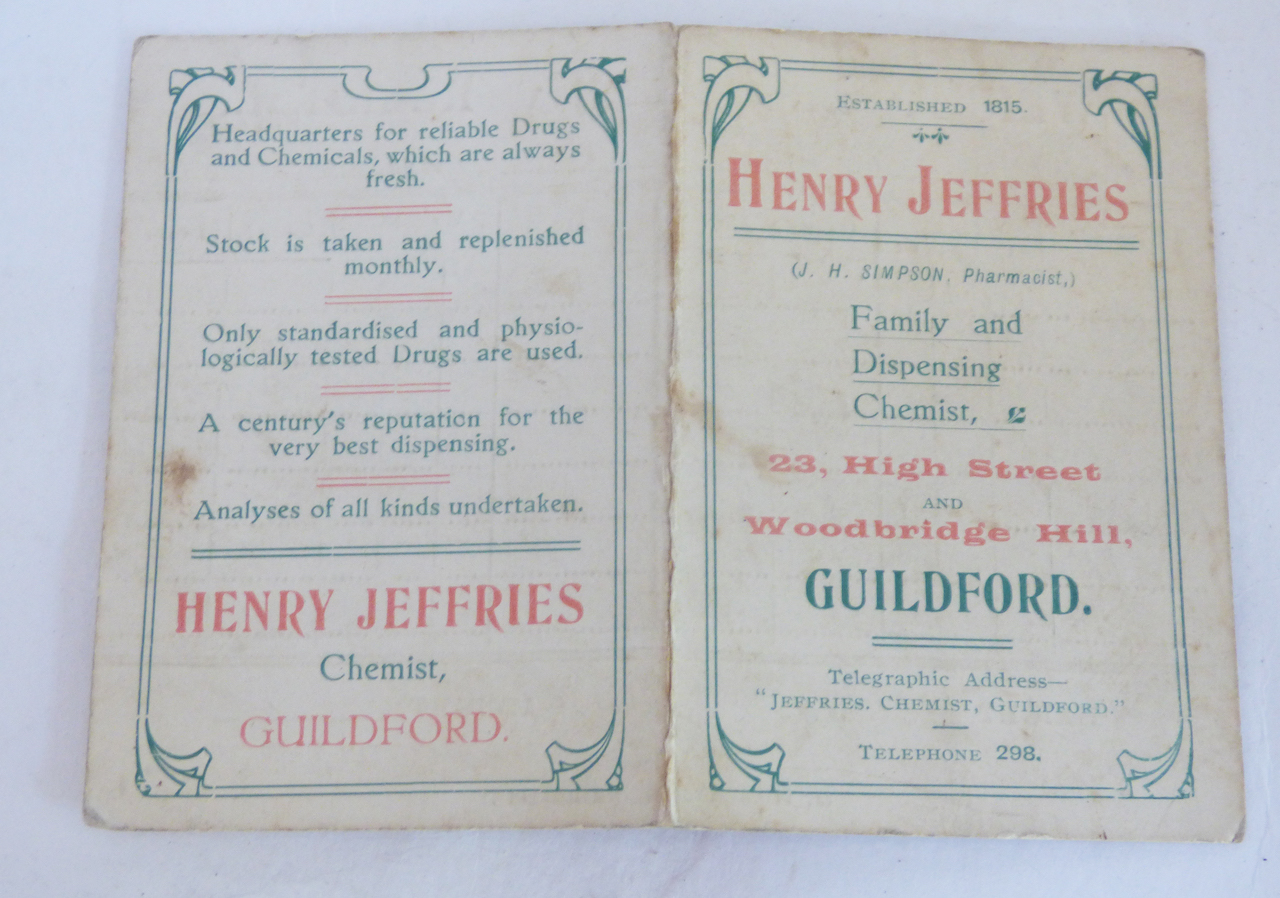

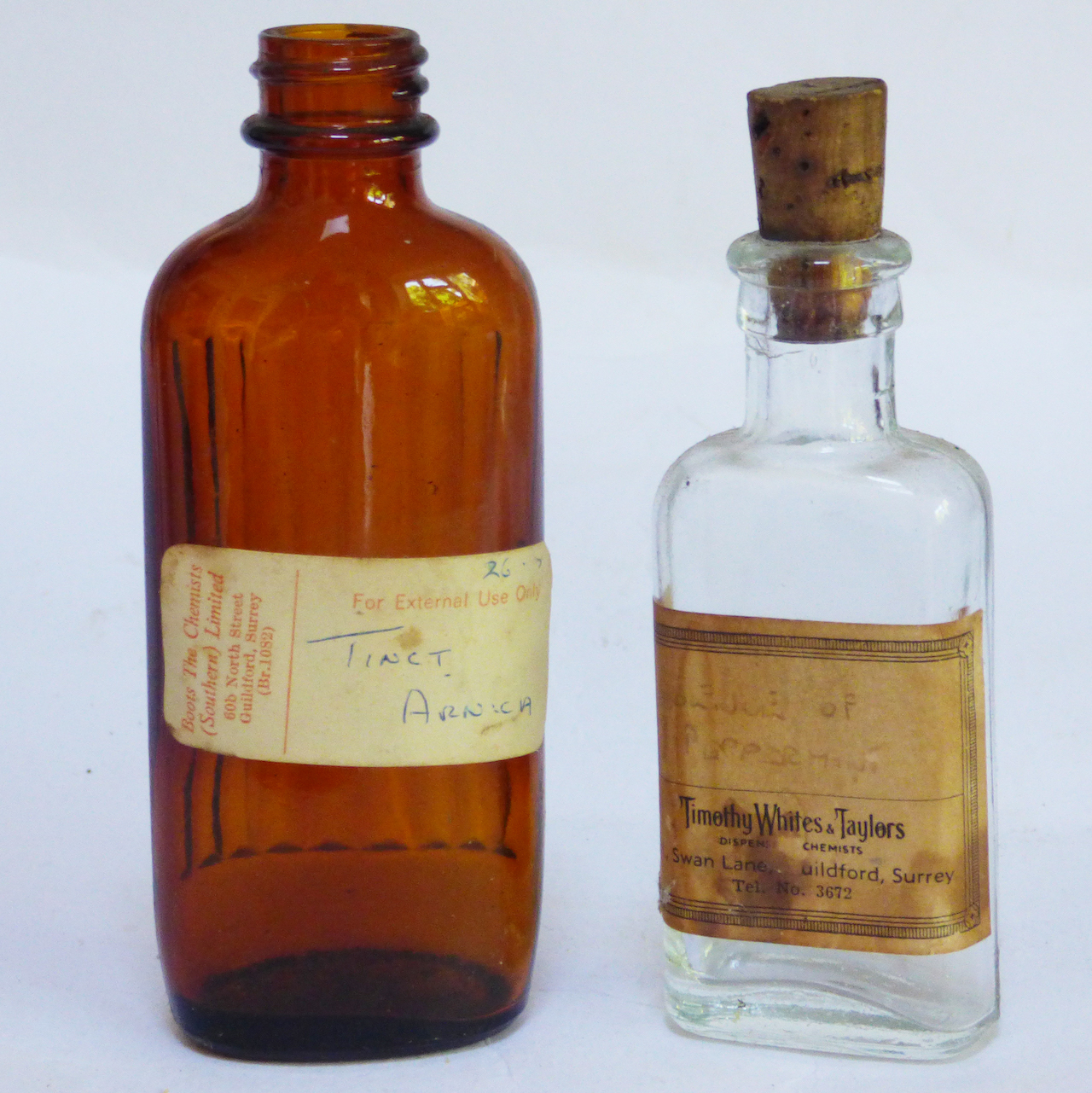
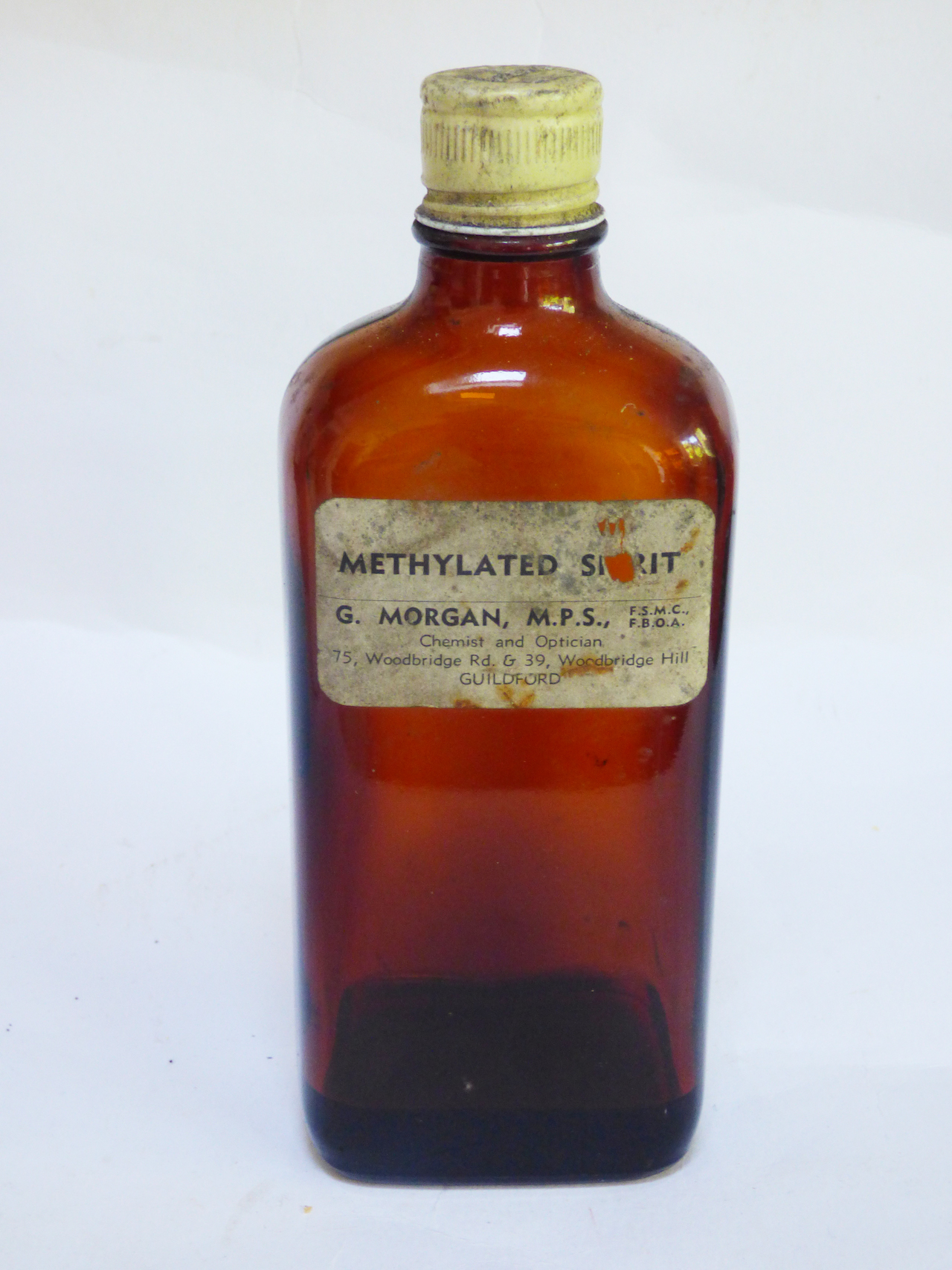

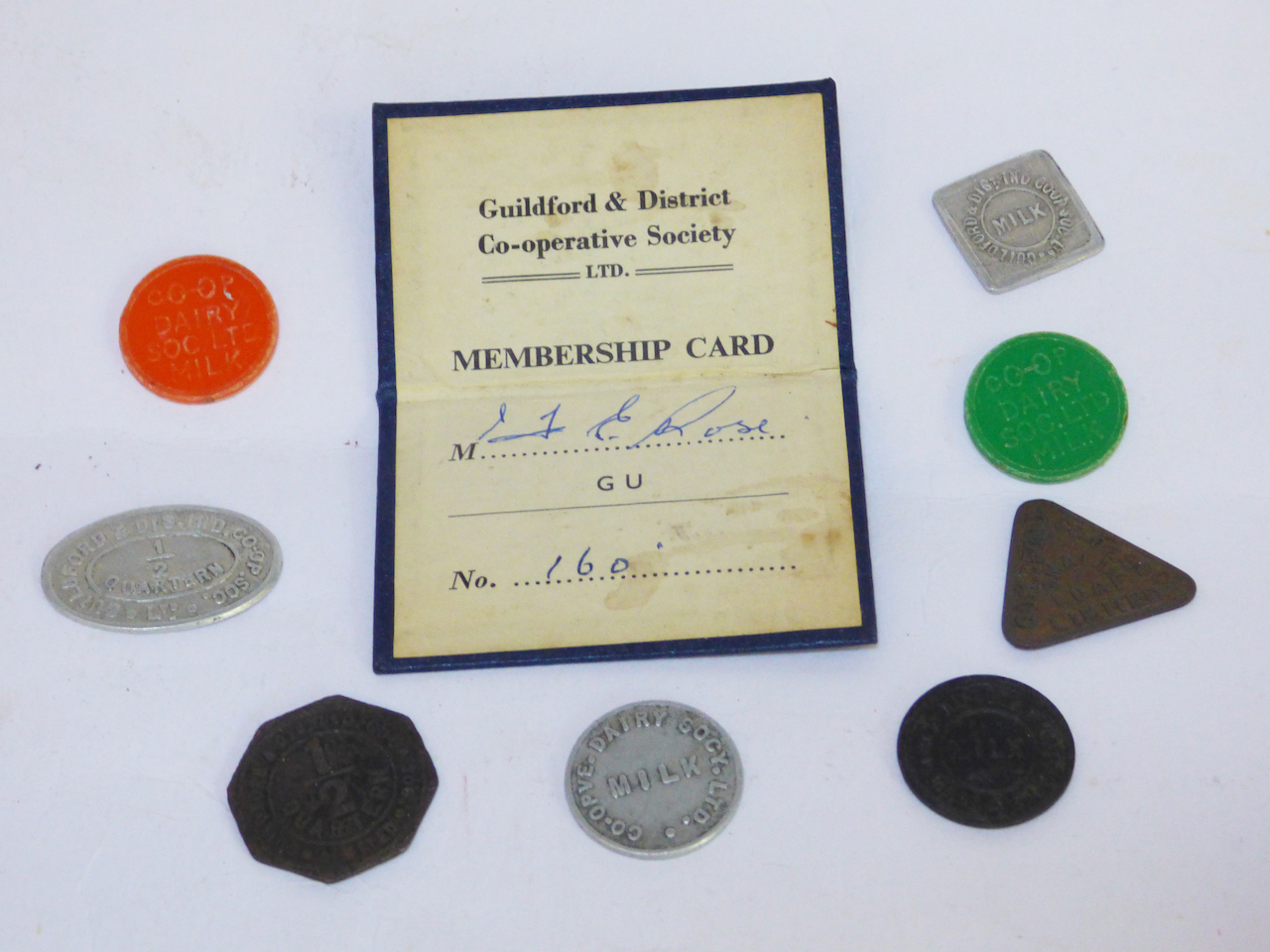













Jan Messinger
May 28, 2020 at 12:02 am
Wow didn’t know until now why Jeffries Passage was named as it is. There must be so many local road names we probably don’t realise the significance of why they are called what they are. Plus others that have changed names over the years.
I think David Rose has the material for another book in these pieces.
Editor’s note: Please see an earlier article by David Rose What’s In A Road Name?